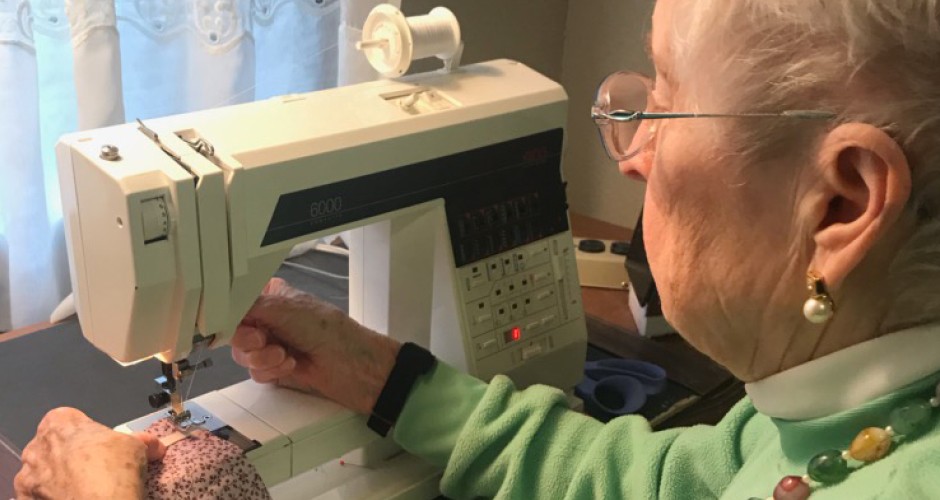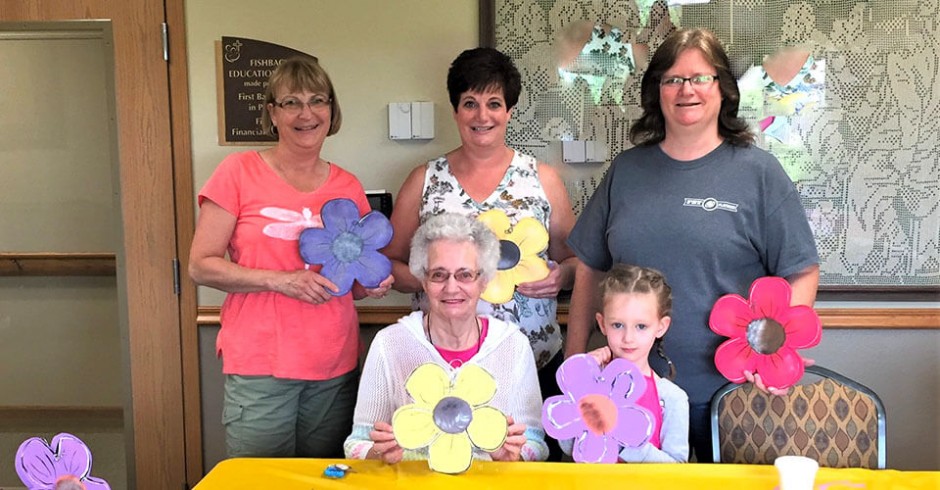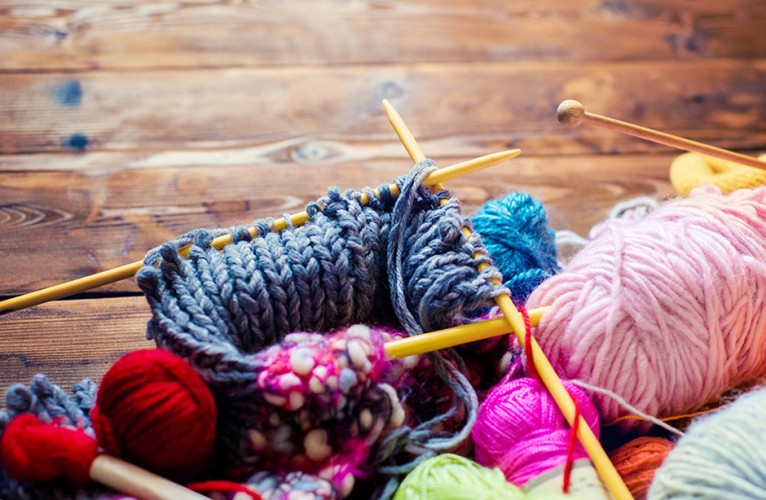Cedar Lake Village resident Bonnie Rouse recently joined the ranks of those working hard to make face masks for those in need during the COVID-19 pandemic. Rouse, however, is not your average mask maker; last month, she turned 100 years old.
“When I heard they were needing them, I thought, ‘this is something I could do,’” Rouse said. “Sewing has always been a hobby of mine.”
With her idea in mind, the next time Rouse left her apartment, she saw a sign hanging up to contact Cedar Lake Village’s wellness director Cheyenne Dains for a face mask pattern and material.
“I thought, ‘well, that’s an answer to my prayers,’” Rouse said.
Dains had a bunch of material already cut out, so Rouse got to work.
Rouse is blind in one eye, but that hasn’t stopped her from mask making. She stops to rest her eyes after every second or third mask then continues sewing.
Rouse estimates it takes her 15 minutes to sew each mask, with the process made quicker by other residents who provide material and cut it up for her.
“My goal was to make 100 masks, but I’ve made at least 150,” Rouse said, who gives the masks to other residents and staff at Cedar Lake Village.
“Bonnie is a wonderfully kind and generous woman,” said executive director Joanna Randall. “Probably close to half of our employees are wearing the cloth masks that she has sewn for us.”
Rouse says the biggest problem with making masks is finding enough elastic. She’s currently using strap ties as a substitute.
Rouse moved to Cedar Lake Village 15 years ago with her husband, who passed away nine years ago. She says she enjoys making face masks instead of just waiting the pandemic out.
“It’s very important, I think, to feel like you’re doing something worthwhile.”
Information in this article was accurate when it was posted. As the COVID-19 pandemic continues, scientific understanding and guidelines may have changed since the original publication date. Read more about the COVID-19 vaccines.
The Good Samaritan Society requires masking in its locations. Anyone shown without a mask was either recorded prior to the masking requirement or recorded in a non-patient care area where social distancing and other safety protocols were followed.




